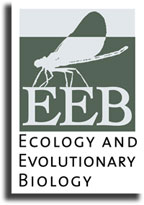 |
|
|
 |
 |
 |
 |
 |
 |
 |
 |
 |
 |
|
|
|
|
|
|
|
 |
|
 |
|
|
| Click on thumbnails for larger image |
|
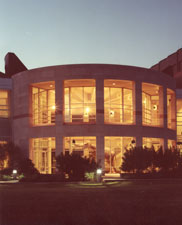 |
|
|
|
Sam Noble Oklahoma Museum of Natural History South Rotunda The curators and staff of the museum conduct scientific investigations to preserve and develop a greater understanding and appreciation of natural resources and human cultural heritage; they develop exhibitions and conduct educational programs that illustrate, interpret, and explain the natural history of the state and region to bring a greater understanding of our world to the people of Oklahoma and others. Link |
|
|
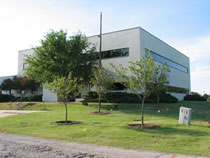 |
|
|
|
Oklahoma Biological Survey The Oklahoma Biological Survey is both a research unit of the College of Arts and Sciences at the University of Oklahoma and a state office. Our purpose is to gather, analyze and disseminate information regarding animal and plant forms and ecological communities within the state and associated geographical areas. Link |
|
|
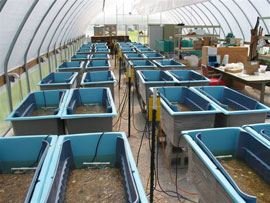 |
Aquatic Research Facility Located at the corner of Chautauqua Avenue and State Highway 9 in Norman, the Aquatic Research Facility is an on-campus field site for experimental research, with extensive infrastructure to support studies in aquatic biology. The 3-hectare (approximately 7.5 acre) site has 32 experimental ponds (each 0.04 hectare), three laboratory greenhouses (each 106 m2), and several arrays of outdoor mesocosm unit. |
|
|
 |
|
Facilities of the Bebb Herbarium The Robert Bebb Herbarium (OKL) houses the largest collection of Oklahoma plant specimens including 210,000 vascular plant, 1800 bryophyte and lichen, and 213 type specimens. The majority of specimens represent plants from Oklahoma with secondary strengths from the Rocky Mountain, intermountain, and southeastern states. The Bebb Herbarium is maintained jointly by the Oklahoma Biological Survey and the Department of Botany & Microbiology. Link |
|
|
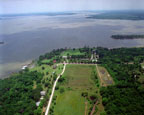 |
The University of Oklahoma Biological Station (UOBS) was established in 1949 as a permanent research facility. This is the first university-affiliated research facility to be established on a man-made lake. The Station’s primary objectives are to promote and support: education, research, and academic conferences. Link |
|
|
|
Kessler Farm Field Lab |
|
|
|
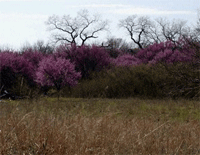 |
|
|
| Kessler Farm Field Laboratory is a 350 acre tract of mixed grass prairie donated to the University of Oklahoma for research and teaching in environmental studies. This diverse landscape has mixed and tall grass prairie, riparian woodlands, Finn Creek and several ponds. In addition, it is the home to a number of long-term meteorological and biological experiments. Link |
|
|
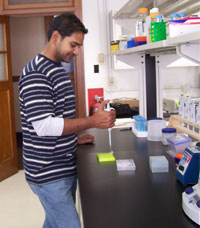 |
|
|
| Molecular Ecology Facility |
|
|
|
The zoology multiuser molecular laboratory provides facilities to perform a broad range of molecular methods in ecology and evolutionary biology. The lab is located in Sutton Hall and maintained by the Department of Zoology. It provides all tools necessary to go from tissues to data analysis in low- to medium-throughput formats (individual tubes to 96-well plates). The lab has an Applied Biosystems 3130xl (16-capillary) genetic analyzer with both DNA sequencing and Gene Mapper software, an ABI 7500 quantitative real-time PCR system, and a GE Storm fluorescent imager, in addition to all basic molecular instruments. Use of the lab is open to all EEB students and faculty. |
|
|
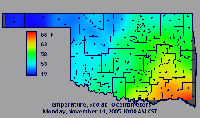 |
|
Oklahoma MesoNet
The Oklahoma Mesonet is a world-class network of environmental monitoring stations. The Oklahoma Mesonet consists of over 110 automated stations covering Oklahoma. There is at least one Mesonet station in each of Oklahoma's 77 counties. At each site, the environment is measured by a set of instruments located on or near a 10-meter-tall tower. It only takes 5 to 10 minutes from the time the measurements are acquired until they become available to the public. LINK |
|
|
 |
|
BioInformatics Teaching Facility
The University of Oklahoma offers a certificate in bioinformatics,to masters and PhD students in five departments: Botany /Micro, Zoology, Chem/Biochem, OUHSC Immunology/Microbiology, and Computer Science. To qualify for the certificate, students must be enrolled in one of the five participating departments, must complete all the degree requirements of the participating department, and must additionally complete the two bioinformatics courses (Z00 5903, and ZOO 5913) and their prerequisites. |
|
|
Last Updated 5November06
Webmaster--eeb@ou.edu |
|
|
|
|
|
|
|
|
|
|
|
|
|
|
|
|
|
|
|
|
|
|
|
|
|
|
|
|
|
|

